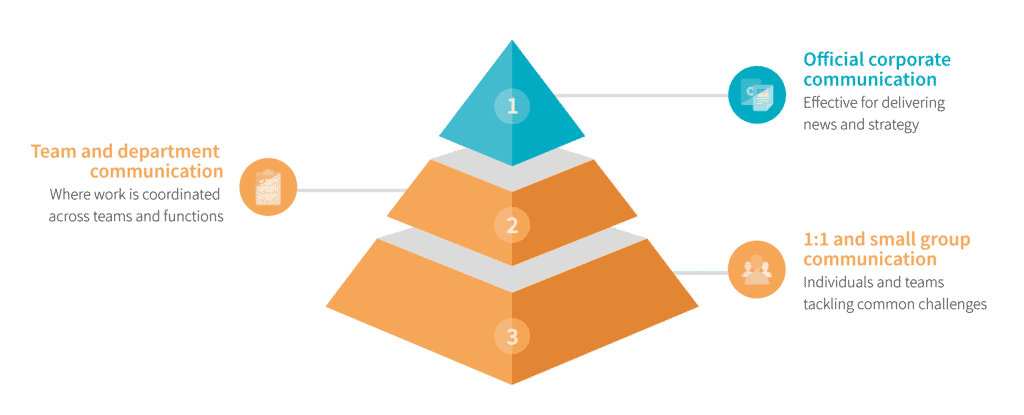5 Lessons Leaders Can Learn from Frontline Workers

In 2020, the pandemic put frontline workers in the spotlight. Employees in essential industries like healthcare, transportation, and retail had to keep working on-site as many office-based employees transitioned to remote work. But their contributions didn’t go unnoticed, as many began to recognize these mission-critical workers as the new everyday heroes.
Download our 2022 Frontline Trends Report to find out leadership can start to improve the frontline employee experience.
With this momentum, it’s safe to say that 2021 is officially the year of the frontline worker.
As more frontline voices are heard, we can all learn from essential workers who continue to navigate a challenging workplace experience. Leaders can not only find personal inspiration from these lessons but also find ways to improve conditions for all workers.
5 Leadership Lessons We Can All Learn from Frontline Workers
Let’s take a more in-depth look at what leaders can learn from frontline workers on both a personal and organizational level.
1. Resilience is a Requirement
When it comes to resilience, leaders tend to focus on the big-picture. In preparing for a crisis, or weathering through one, leaders look for business continuity tools that will minimize disruption to company operations. But being a frontline worker requires a personal kind of resilience, especially during and after the pandemic.
Frontline workers are often in customer-facing roles that require them to interact with the public, putting them at greater risk for COVID-19. This coupled with the fact that frontline industries are often understaffed and underpaid, it’s easy to see how workers need to be resilient on an everyday basis.
While efforts to celebrate and shine a spotlight on frontline workers are by no means comprehensive, we’re finally hearing more personal stories of how these workers are persevering during the pandemic.
One such voice is from Sabrina Hopps, a 46-year-old housekeeping aide in Washington, D.C. She works in a critical care facility but cannot afford to socially distance in the apartment she shares with her daughter, granddaughter, and immunocompromised son.
“I’m nervous, but I know this is my fight, so I’m going to continue until I can’t anymore,” Sabrina said. Her dedication to her work and the resilience she’s displayed in spite of difficult circumstances serve as an example to all leaders.

2. Job Descriptions Are Grey Areas
During the pandemic, frontline workers have been asked to go above and beyond the tasks outlined in their job descriptions. Due to unprecedented demands and shortages, many workers have been asked to do more with less.
Take Francesca Capeda. She works as an environmental service worker, or custodian, at a New York hospital. She often works as long as doctors or nurses but for significantly less pay and sometimes without the same PPE that’s given to other hospital staff. During the pandemic, her work is essential for keeping the hospital clean and preventing the spread of infection.
Francesca, like many other healthcare workers, needs to go beyond her job description and perform tasks like translating for patients who don’t speak English well. “At some point we’re all taking care of the patients,” she said in an interview.
It’s true that frontline workers aren’t the only ones whose job descriptions aren’t clear-cut. Leaders often have to work outside their scope of expertise, too. But frontline workers have to do so with lower pay and without adequate support or recognition.
One of the key leadership lessons from these frontline stories is recognizing that people at all levels are integral parts in the success of an organization. For many, going beyond what their job description entails is not an option but a necessity.
3. Dedication Demands (But Doesn’t Often Get) Respect

Hearing from frontline workers makes it clear that they deserve better. But how can leaders in frontline industries improve conditions for all employees?
Digital enablement is a small but significant part of the puzzle. Implementing the right digital tools might not solve every problem. It might not solve the fact that frontline industries are understaffed, underpaid, and underequipped. But making sure employees are recognized for their efforts is a step all organizations can take, even if they can’t change the conditions themselves.
Hospital administrative coordinator Tony Powell said that while people recognize doctors and nurses, other workers aren’t as widely acknowledged.
“Nobody is telling them, ‘We appreciate what you do. We realize you have a family. We realize you are underpaid. We realize you are understaffed. People are not looking at people like us on the lower end of the spectrum. We’re not even getting respect. That’s the biggest thing: we are not even getting respect.”
Frontline workers like Tony are dedicated to their jobs but receive little to no respect for the time and effort they put in despite less-than-ideal conditions. While companies might not be able to raise wages or hire enough workers, they can implement digital tools that recognize existing workers, giving them the respect they deserve.
Using an app like Beekeeper for employee recognition can go a long way towards providing one of the most basic needs in any workplace: respect.

4. Showing Up and Suiting Up
The phrase “showing up and suiting up” has taken on new meaning during the pandemic. Many frontline workers are not given proper PPE while still being expected to show up, putting themselves and the people they serve at risk.
Elizabeth Peachy works as a home health aide, delivering care to high-risk patients. She says that she’s one of many aides who don’t get any benefits, PPE, or resources other than a website. Without home health aides, she says that hospitals would be flooded with patients even more than they are now.
Providing resources on a web page or via email just doesn’t cut it for the frontline workforce in 2021. Unlike office workers who are at their computers all day, frontline workers aren’t always able to consult these resources and end up having to make difficult decisions with little to no guidance.
This digital divide is one area where leaders can step in and make a difference for individuals like Elizabeth. For example, mobile apps like Beekeeper can give employees on-the-go access to document libraries that detail safety information and best practices.
“Suiting up” isn’t just about PPE for frontline workers. Convenient access to information is another form of “suiting up” that offers a significant form of protection.
While workers may not always be able to “suit up” in the literal sense, leaders can empower workers by providing company-wide tools to make showing up easier.
5. Small Improvements Make a Big Difference
Before the pandemic, there were an estimated 30 million U.S. workers in frontline positions like nurses, cleaners, grocery store clerks, and bus drivers. These positions were already understaffed, underpaid and underappreciated pre-pandemic. The additional risks and safety restrictions during the pandemic only exacerbated these issues, leaving workers more frustrated than ever before.
As nursing home cook Ditanya Rosebud says: “We didn’t sign up for this pandemic.” She feels that while she loves her work and tries to be compassionate towards the people she serves, she receives no compassion from the company she works for. “Our situation will be better if we can get appreciation,” she says. “That sounds crazy: appreciation. A thank you. ‘I’m glad you are here, thank you for coming to work.’”
Sending out virtual thank you notes, or featuring employees on a company-wide newsfeed might sound like they wouldn’t make much of a difference. But they are simple steps leaders can take right now to make workers like Ditanya feel seen and heard. Ideally, these steps are part of an internal communication strategy that facilitates bottom-up leadership, improving the morale and productivity of frontline workers.

What Leaders Can Learn from Frontline Workers: A Caveat
While 2020 brought on a shift towards working from home for many people, others had no choice but to continue working on the front lines. Some have hailed frontline workers as ‘heroes,’ but it’s also worth considering what that label means moving forward in 2021.
Some have argued that calling healthcare workers ‘heroes’ is harmful. While their actions may be heroic, calling them ‘heroes’ without also listening to what they have to say closes off any possibility for improvement.
It’s true that calling frontline workers heroes and stopping there does little to support them. Public recognition is important, but bottom-up communication within a company is essential for making sure frontline voices continue to be heard.
By far, the most common request from frontline worker stories revolves around a few common, central themes: appreciation, respect and recognition. Frontline workers are showing up and doing their jobs whether or not conditions are ideal. Leaders can take their stories to heart and show up for them in the form of better communication tools.
While 2020 highlighted the importance of frontline workers, 2021 brings an opportunity to take actionable steps for learning from their stories and struggles.
Need help navigating the frontline worker technology landscape? Download our 2022 Trends Report below.

About the author
Beekeeper
Interested in learning more?
Join 1200+ companies transforming frontline work with Beekeeper. Start your journey today to make every task easier, every team stronger, and every shift smoother.







